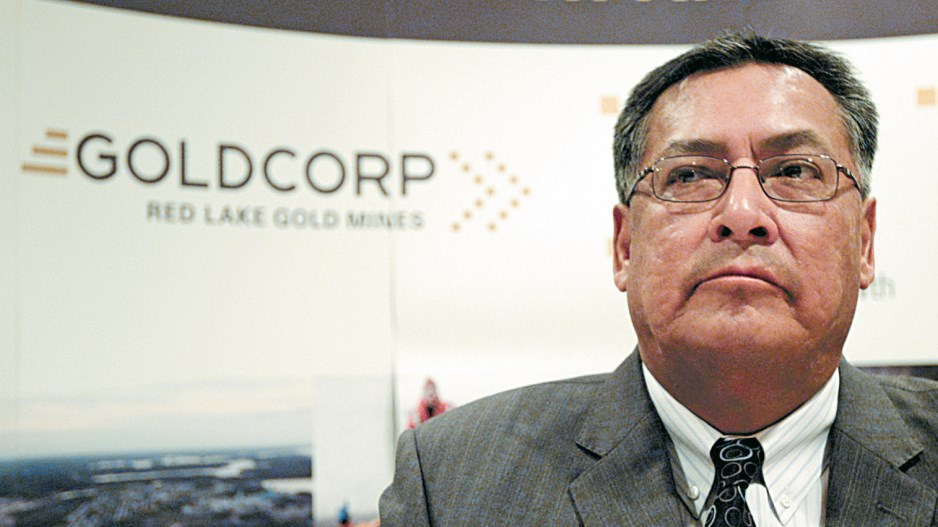It took four years and numerous community meetings, but Vancouver-based mining giant Goldcorp Inc. (TSX:G) and Ontario’s Lac Seul First Nation signed a landmark collaboration agreement for its large-scale Red Lake Gold Mines last month.
The scope of the agreement – formerly known as the Obishikokaang Collaboration Agreement, named after the traditional name of the Lac Seul nation – is broad. It considers everything from future exploration activities on the Red Lake site to training and employment opportunities for Lac Seul members and upcoming financial contributions from Goldcorp to Lac Seul for community initiatives.
To help facilitate those possible angles a new advisory committee comprised of Goldcorp and Lac Seul representatives has been established. Chris Cormier, general manager of Red Lake, said the committee is a key part of the agreement because it ensures both the company and the Lac Seul nation will have a dedicated forum in which each party can share its plans, views and concerns regarding any mine developments.
“This really puts the Lac Seul First Nation in all parts of the discussion from the outset. That is the type of culture we want to create,” said Cormier.
“Partnerships like this aren’t easy to get done, but both parties are better off.”
In a statement to the media, Lac Seul First Nation chief Clifford Bull echoed Cormier’s sentiments, saying, “This agreement demonstrates that Lac Seul First Nation can work successfully with industry. I want to extend my gratitude to Goldcorp for working with our First Nation to develop this Obishikokaang Collaboration Agreement, which will help create prosperity within our First Nation and the region, and certainty for Goldcorp.”
The 2,335-hectare Red Lake Gold Mines property, Goldcorp’s top-producing mine, is located in the District of Kenora in northwestern Ontario on Lac Seul traditional land. One of the Lac Seul communities – the band is spread over three communities, all in northwestern Ontario – is located 75 kilometres from the mine.
The Red Lake Gold Mines is composed of two operating complexes, the Red Lake complex and the Campbell complex. According to Cormier, Goldcorp has “ongoing exploration activities” on and around the Red Lake mine site. Chief among those exploration plans is the Cochenour project, a gold deposit forecasted to be in production in the first half of 2015.
Because exploration activity is a lengthy process and can potentially lead to the development of a mine, one stipulation of the collaboration agreement is that the committee must approve any expansion within 100 kilometres of the Lac Seul communities.
Another condition of the agreement is for Goldcorp to provide training to members of the Lac Seul nation for careers at the mine. Cormier said the mine has a number of career opportunities because of staff retirements and new positions created because of exploration work. But training local people, he added, is an added benefit because they are close by.
“This is a great opportunity for us to find people in northern Ontario who want to be in northern Ontario,” said Cormier.
“They have the chance to be here for their careers.”
The mutually beneficial Obishikokaang Collaboration Agreement, lengthy planning period notwithstanding, stands at odds with many of the controversial resource projects proposed in British Columbia which pit mining companies against First Nations communities.
For example, Taseko Mines’ (TSX:TKO) New Prosperity project, a proposed large-scale copper-gold mine southwest of Williams Lake, is once again being evaluated by a federal review panel. The First Nations groups in the area, led by the Tsilqot’in National Government, strongly oppose the project.
Avanti Mining (TSX-V:AVT) is proposing to reopen the dormant Kitsault molybdenum mine north of Prince Rupert.
The Nisga’a Nation is suing the B.C. government for issuing an environmental certificate to Avanti, claiming the environmental assessment was incomplete.
In an interview last month with Business in Vancouver, Rick Rule, a prominent investment analyst and chairman of Sprott USA, said First Nations communities in B.C. aren’t included early enough in the planning of resource projects. Nor is there a clear agreement on how much money First Nations communities should receive from mining developments.
“In rural B.C., there needs to be a social consensus on mining projects and that social consensus needs to involve more completely First Nations. First Nations communities need to be participants in every regard,” said Rule.
“In terms of primary resource development in B.C., the financial discussion needs to be had much more earnestly between First Nations and resource companies. Who gets the money?” •




